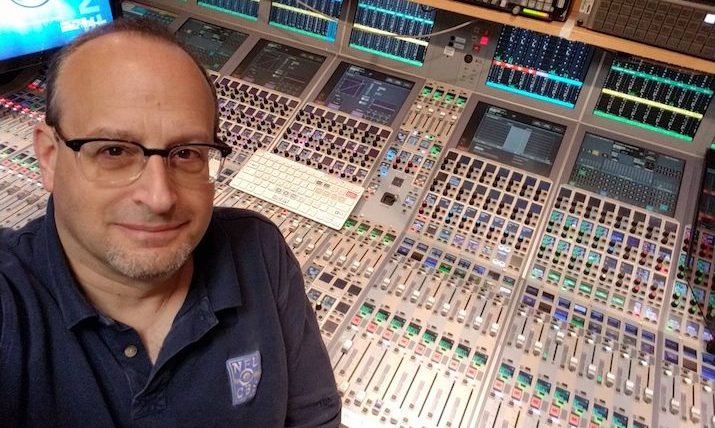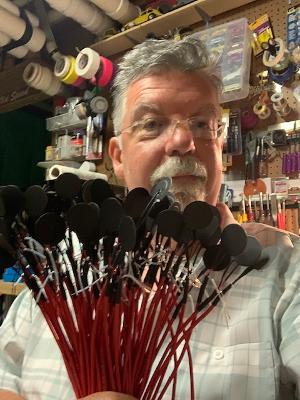Audio Teams Look Forward to a Naturally Noisy NFL Season
Both A1s and management welcome a return to the ‘old’ normal
Story Highlights
The NFL is back, and the cheers you hear are real. That shift from prerecorded audience noise to the real thing is the main change in the sport’s sound this season, and it’s a welcome return.
“It’s great to hear the real thing again,” says Phil Adler, who is entering his third decade of mixing NFL on CBS. “I haven’t changed how that sound is captured, though. When we were using prerecorded noise, I just subbed out my low crowd mics for the prerecord feed. Now I just put those low mics back in.”
There are other tweaks, with the effects of the pandemic still quite evident. For instance, for pre/postgame interviews, instead of CBS Sports sideline reporter Melanie Collins’s moving her handheld back and forth, which would necessitate her standing close to her interview subject, there are two mics involved — for instance, a headset for the athlete postgame or a boom mic on the field pregame — to comply with COVID distancing protocols. On the other hand, mixers for the NFL’s enhanced feed (the quarterback’s line calls that the league’s stadium mixer sends to network A1s) are back in their nearby locations in the stadiums, which Adler says adds to the renewed sense of normalcy this season.
Adler, who has worked with his submix partner, Gordon Gilliam, for most of the past 20 years, says the Game Creek Columbia mobile unit is also a work in progress.
“It was pretty much where I’d left it at the end of last season,” he explains. “But, in the meantime, they had done some updates to the video router. It’s my third year on this truck, and I’m still dialing it in.”
Dave Grundtvig, another A1 for NFL on CBS this season, notes that he didn’t mix the sport last season but was deeply involved in building the infrastructure for the NBA’s augmented-crowd-sound systems. This year’s football audio will be refreshingly “normal,” he says.“That’s a good word to use: normal,” he adds. “The [venues] are full, and the fans are enthusiastic. Week 1 was a good start for what we hope will be a very normal-sounding season.”
Fox Ponders Other Ways To Capture Crowd Sound
Fox Sports SVP, Field and Technical Operations, Michael Davies considers returning crowds a welcome addition to the NFL soundscape. Echoing what Fox Sports VP, Field Operations and Engineering, Kevin Callahan told SVG earlier — “We really want to make sure that viewers at home are feeling that energy in the stands, so we’re doing everything we can do to help our mixers” — Davies notes that a number of tactics are under consideration, including dedicated crowd submixes, a technique the network has been testing but has not yet decided on (the network has experimented with a third mixer on some international soccer games as part of that process). Additional microphones might also be on the agenda, but he warns that they can be counterproductive, adding to an already complex sound mix. Fox will deploy at least four parabolics for each NFL game, six on the bigger games.

Fox Sports’ Michael Davies: “We are attempting to rebalance that three-legged stool, such that it conveys the excitement of the crowd, enhances the effects on the field, and does the announcers justice.”
“It’s more about sound management than adding capture devices,” Davies contends, comparing the broadcast-sports soundscape to a “three-legged stool” — crowd sound, field effects, and announcers — for which achieving a balance is broadcast-sports audio’s holy grail. “We are attempting to rebalance that three-legged stool, such that it conveys the excitement of the crowd, that it enhances the effects on the field, and it does the announcers justice in allowing them to not only be just over the game [but also] a part of the game and fighting against the crowd. I think any announcer would say it’s part of their job. I think they like it. If it’s an exciting play and they’re yelling about it, they’re fighting the crowd, and the crowd’s loud. It’s an exciting situation.”
New Faces
The post-pandemic broadcast-sports landscape has seen several changes in personnel behind the audio console. At Fox Sports, Jamie McCombs, who has mixed NFL, XFL, and other sports for the network, takes the seat this year as A-game A1, following Fred Aldous’s retirement from active mixing (Aldous remains available on a consulting “emeritus” basis, says Davies). Citing other veterans on Fox’s roster — including Shawn Peacock, Jamie McCombs, Jeff Cohen, Kevin McClosky, Tim Dunn, Mark Butler, and Joe Carpenter — who mix NFL and other sports, Davies notes that the broadcaster’s talent pool is substantial. Via Home Run, Fox Sports’ version of the REMI/at-home workflow, he adds, the broadcaster increasingly relies on studio-based audio mixers in its Charlotte, NC, and Los Angeles facilities.
“One day,” he says, “they might be doing Iowa and the next day West Virginia, while never leaving the [studio]. Eighty percent of our college football at the moment is done this way, though all NFL [mixing] is still done onsite.”

Fox Sports’ Joe Carpenter notes a challenge this season: reduced sideline space will limit parab mics’ ability to capture mid-field sound.
Fox Sports Senior Audio Mixer Joe Carpenter, who both mixes and supervises NFL audio, cites a new challenge this season. The league has widened the coaches’ sideline boxes, which in turn has reduced the range of sideline personnel, including parabolic-microphone operators, who are now restricted to the area from the goal line to the 25-yard line instead of to the 35-yard line. That 10-yard reduction at each end of the field makes it almost impossible for the parab mics to pick up mid-field sound now that crowds are back.
“We have the NFL enhanced feed, which gives us two to three seconds after the snap,” he explains. “After that, we had always relied on the parabs to get sound for the rest of the play, which usually lasts eight to 10 seconds.” Fox’s Skycam microphone, he adds, may be able to compensate for some of that.
A longer-term solution might be one he could borrow from his MLB bag of tricks: burying wireless lavaliere microphones in the field. But given the lengthy process it took for the NFL to approve the guard and center lavs that came into use after the umpire was moved further from the scrimmage line in 2010, Carpenter doesn’t expect that to happen anytime soon, if at all.
Davies says the search for new sound sources is never-ending, although he acknowledges that perhaps broadcast might have “kind of reached a plateau” when it comes to where it can put a transducer. “There’s no secret ray gun of audio that’s going to get you more field effects. But we have our Skunk Works. We’re always looking.”


